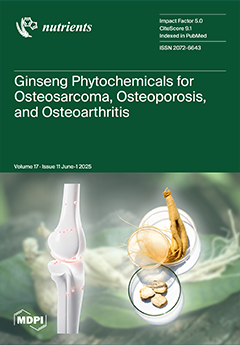Background/Objectives: Gestational diabetes mellitus (GDM) is a major pregnancy complication with rising global prevalence. The Mediterranean Diet (MD) has shown metabolic benefits, but total adherence scores may obscure meaningful variation in dietary quality. This study aimed to investigate whether specific dietary patterns, identified within the MD framework, and their glycemic load (GL) are associated with GDM risk.
Methods: This prospective cohort is part of the BORN2020 longitudinal study on pregnant women in Greece; dietary intake was assessed using a validated food frequency questionnaire (FFQ) at two time points (pre-pregnancy and during pregnancy). MD adherence was categorized by Trichopoulou score tertiles. GL was calculated for food groups using glycemic index (GI) reference values and carbohydrate content. Dietary patterns were identified using factor analysis. Logistic regression models estimated adjusted odds ratios (aORs) for GDM risk, stratified by MD adherence and time period, controlling for maternal, lifestyle, and clinical confounders.
Results: In total, 797 pregnant women were included. Total MD adherence was not significantly associated with GDM risk. However, both food-specific GLs and dietary patterns with distinct dominant foods were predictive. GL from boiled greens/salads was consistently protective (aOR range: 0.09–0.19,
p < 0.05). Patterns high in tea, coffee, and herbal infusions before pregnancy were linked to increased GDM risk (aOR = 1.96, 95% CI: 1.31–3.02,
p = 0.001), as were patterns rich in fresh juice, vegetables, fruits, legumes, and olive oil during pregnancy (aOR = 2.91, 95% CI: 1.50–6.24,
p = 0.003). A pattern dominated by sugary sweets, cold cuts, animal fats, and refined products was inversely associated with GDM (aOR = 0.34, 95% CI: 0.17–0.64,
p = 0.001). A pattern characterized by sugar alternatives was associated with higher risk for GDM (aOR = 4.94, 95% CI: 1.48–19.36,
p = 0.014). These associations were supported by high statistical power (power = 1).
Conclusions: Within the context of the MD, evaluating both the glycemic impact of specific food groups and identifying risk-associated dietary patterns provides greater insight into GDM risk than overall MD adherence scores alone.
Full article






